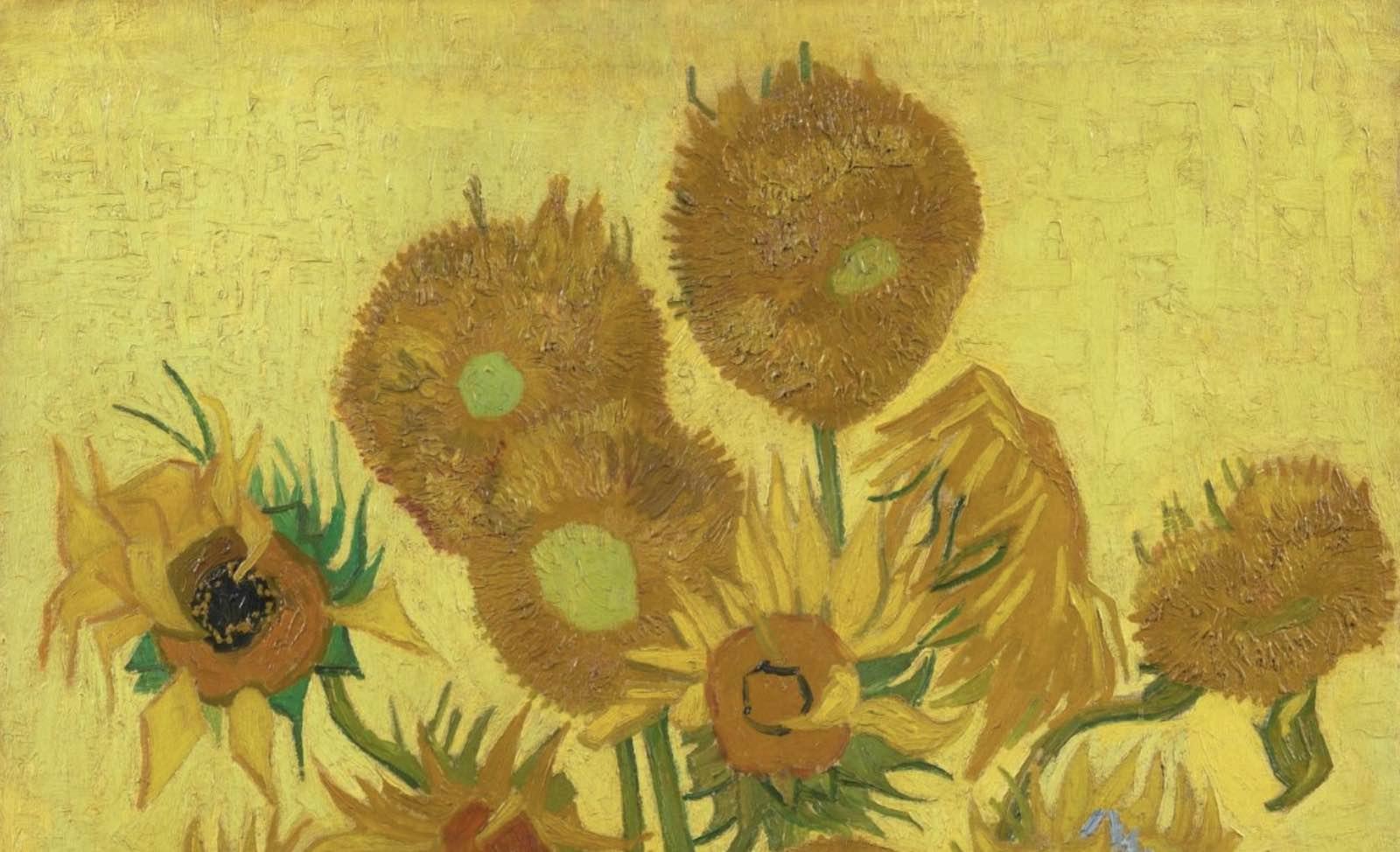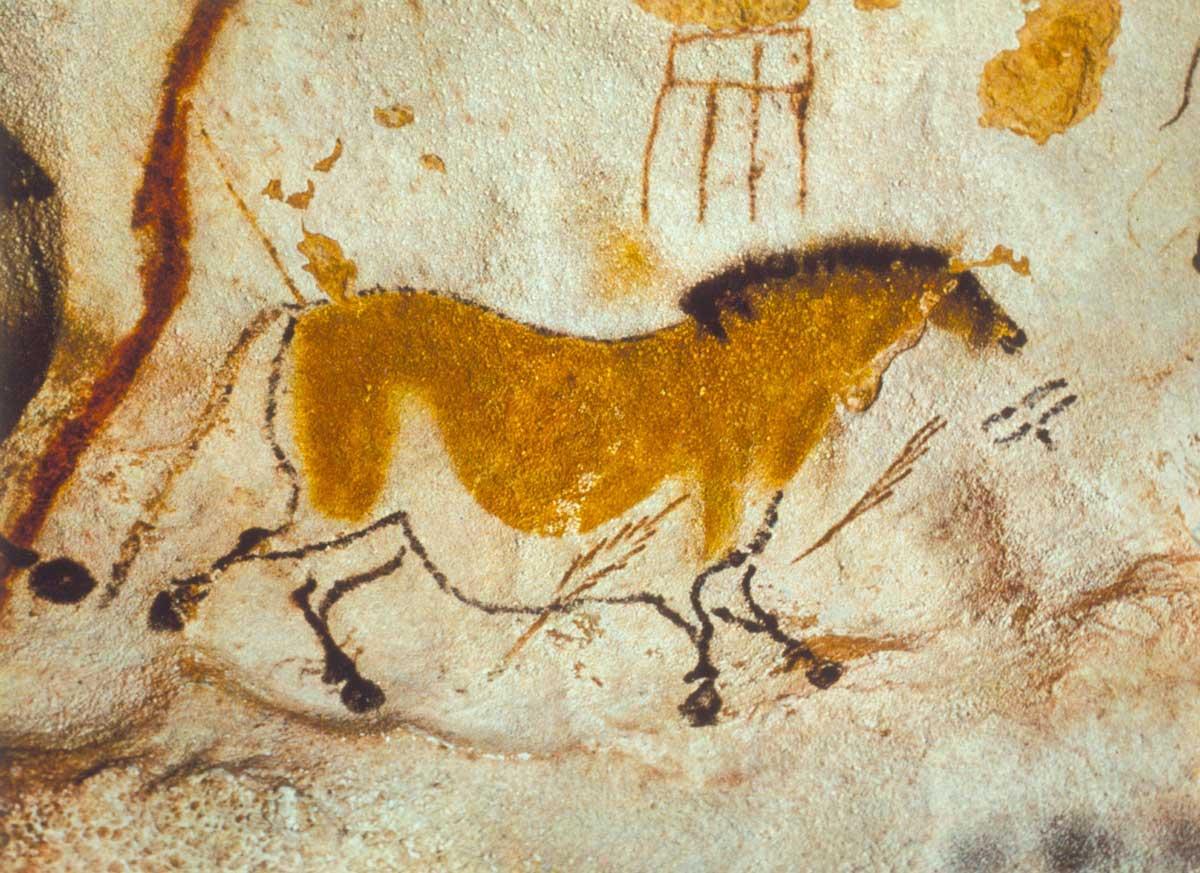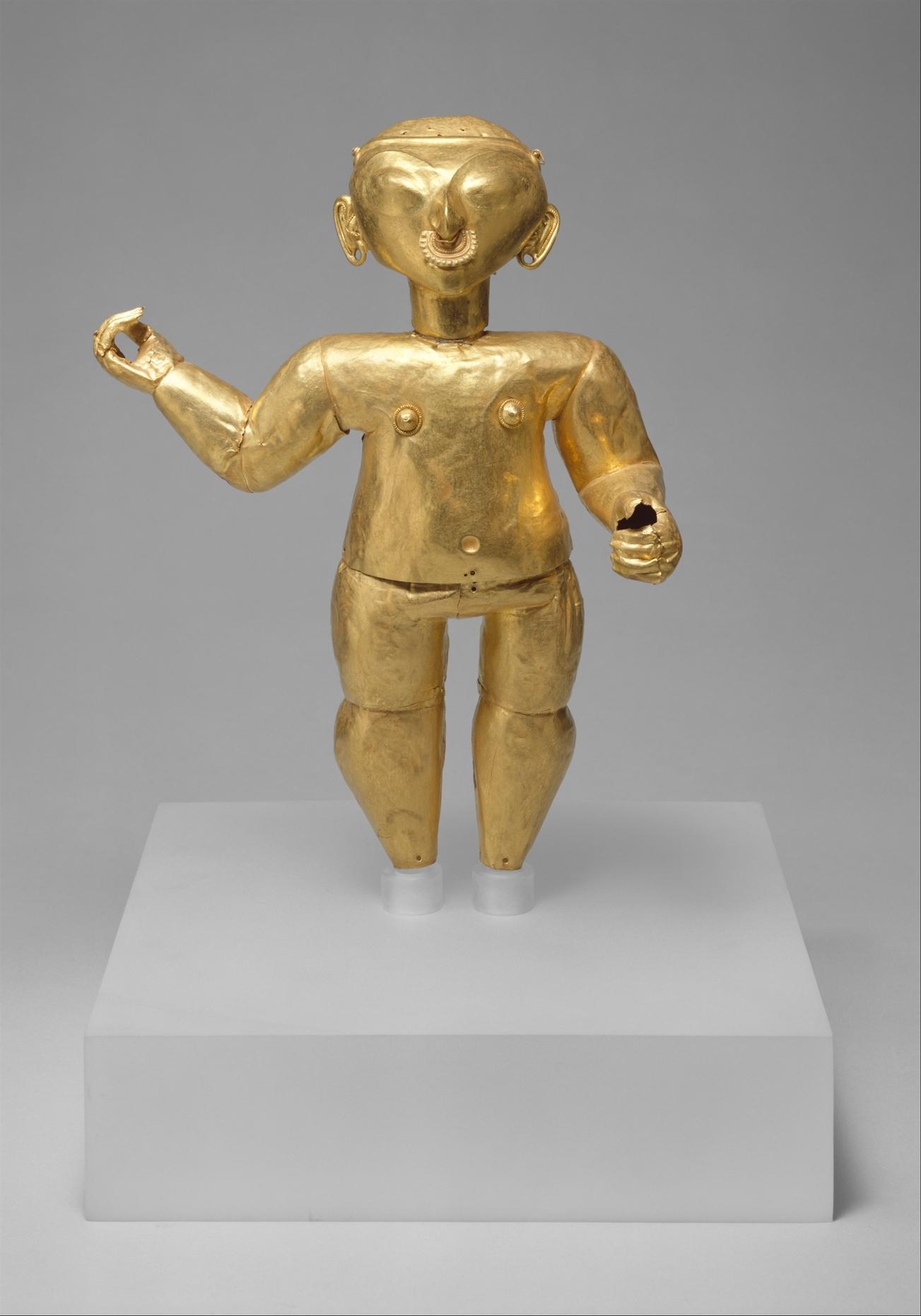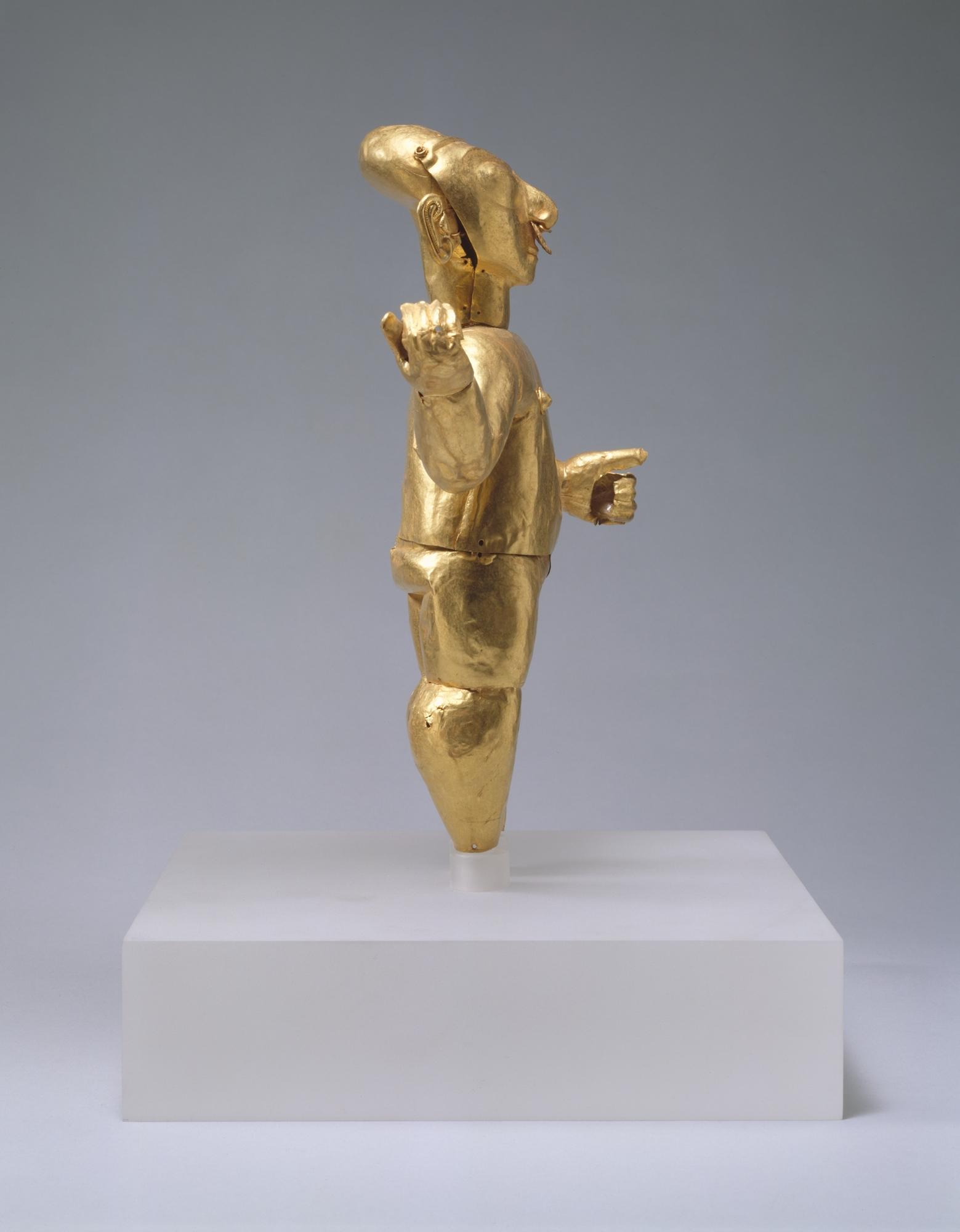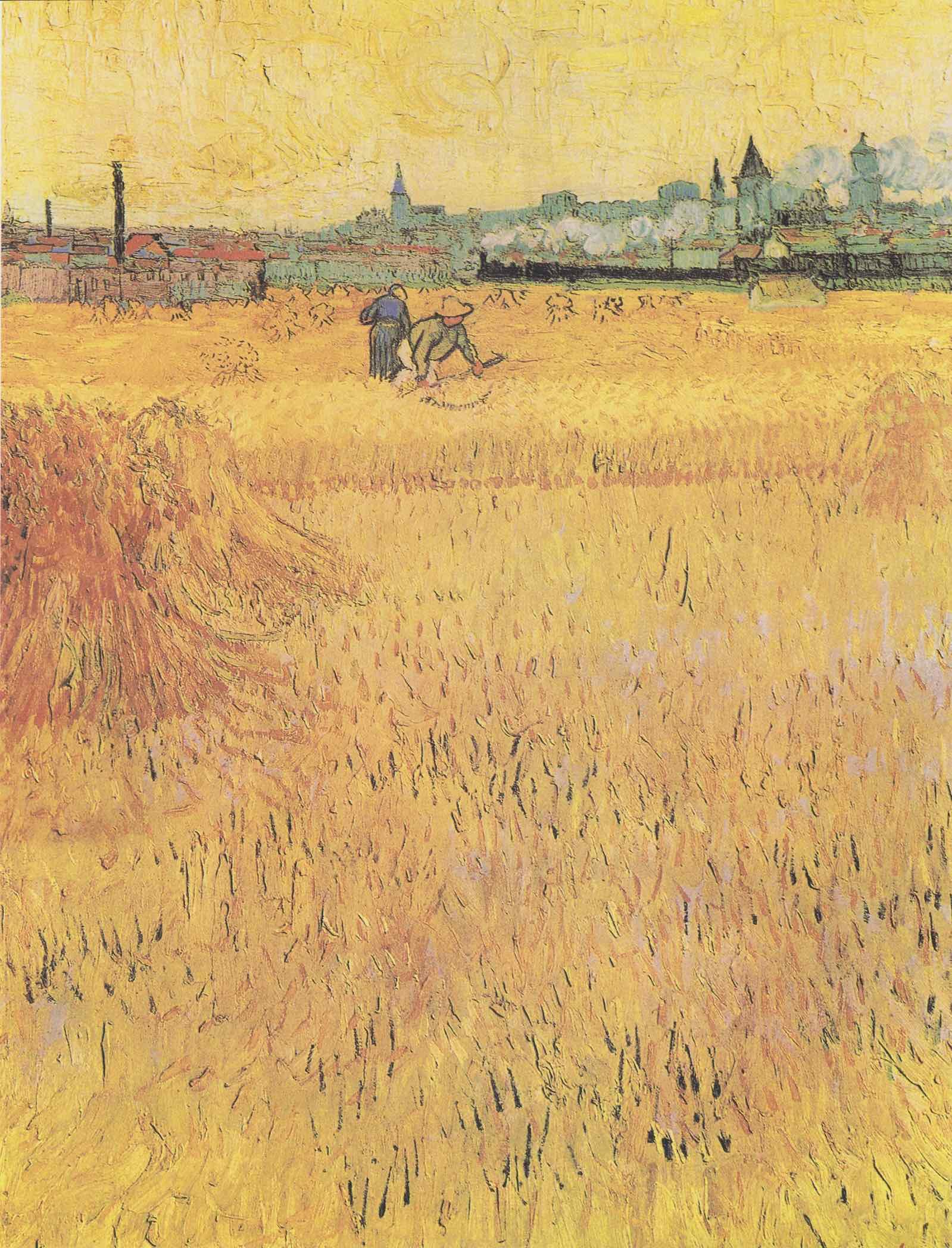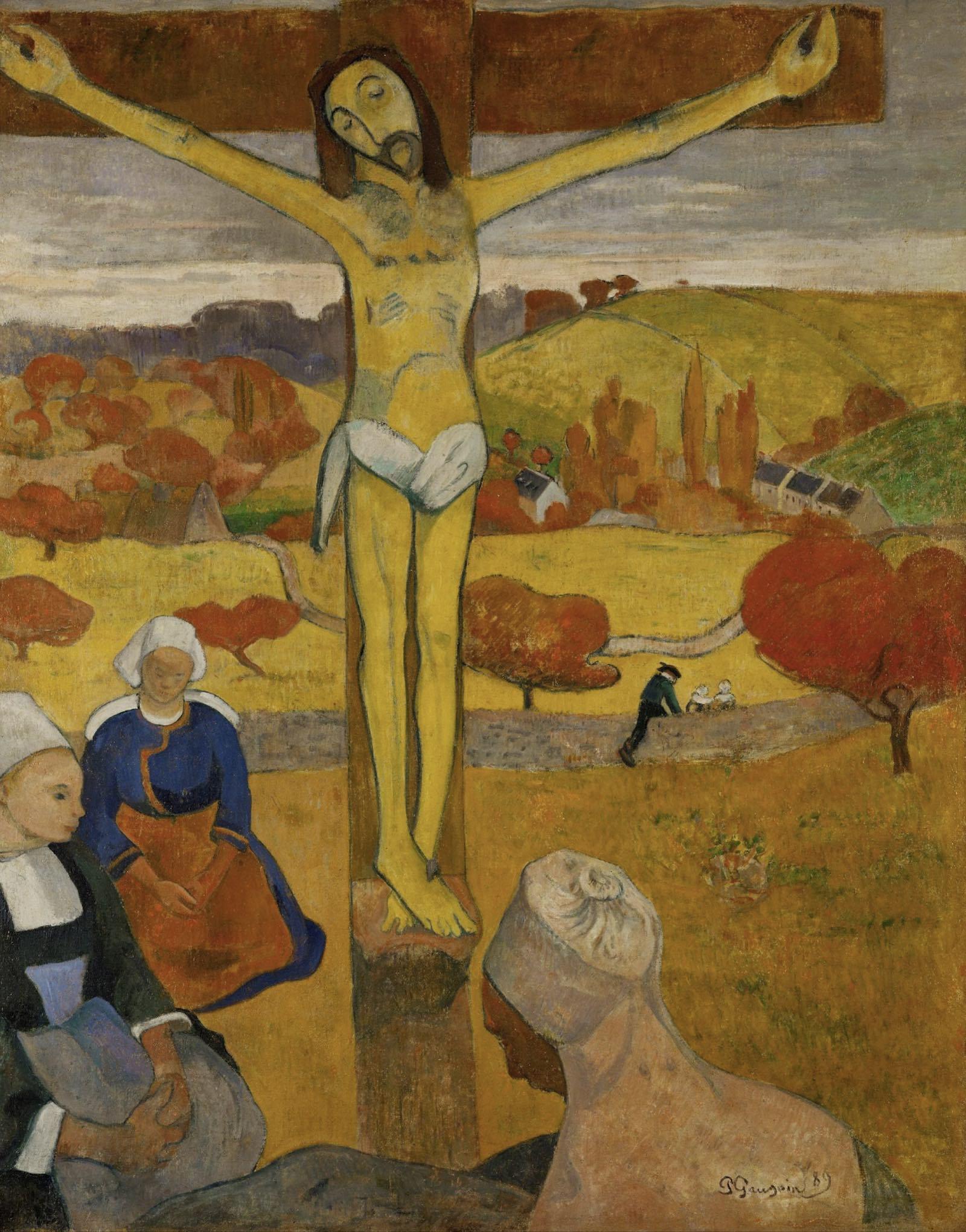Yellow ochre—a rich, earthy shade of the color—is one of the earliest pigments utilized by humans. It appears in a now well-known prehistoric cave painting of a horse in Lascaux. Though the product of several generations, these caves are estimated to be around 17,000 years old.
In Buddhist literature, the Buddha is said to have a golden complexion. Within the religion—which was founded 2,500 years ago—and throughout surrounding cultures, the shade is therefore associated with divinity and it often covers Buddist temples.
In many Pre-Columbian cultures of South and Central America, golden artworks and cultural items were once numerous. Though yellow and gold were central to these cultures, golden items were not highly valued for their luxuriousness or rarity because they were not rare in pre-colonial times. Still, these objects were precious and carried vital information about the cultures and peoples of this region.




